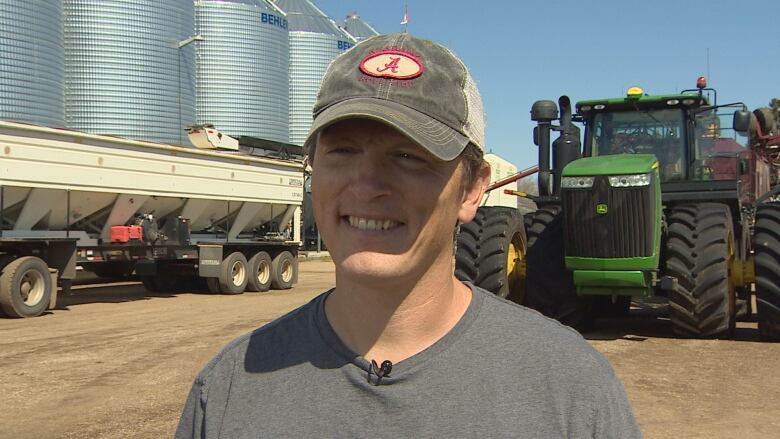Sask. farmers say future is optimistic for young operators
Agriculture census shows the number of farmers under 35 increased for the first time since 1991

When Adrienne Iveydecided to return to the farm some 20 years ago, she considered herself an anomaly.
Now, the 37-year-old cattle rancher and mother of twocould be the face of the 2016 Census of Agriculture, released on Wednesday.
That census shows for the first time in a quarter of a century, the number of young farmers is increasing.
There are more female farmers, too.
- King canola, fewer cows, aging producers: Digging into the agriculture census
- Sask. ranchers stunned as beaver herds 150 cattle
"It's becoming not abnormal to see people like me, that look like me, out in the field," said Ivey, who works with her husband on his family'sfarm located about 200 kilometres northeast of Saskatoon.
According to the census, the number of farm operators under 35 increased from from 24,120 in 2011 to 24,850 in 2016.
'Embracing female farmers'
StatsCan also reportsthere were 77,970 female farmers in 2016, meaning women now make up 28.7 per centof operators, up from 27.4 per cent in 2011.
In Saskatchewan, one quarter of all farm operators are women.
"Like the rest of the the world, agriculture is changing and we are embracing female farmers," she said.
Here's a snapshot of farming in Saskatchewan, according to Statistics Canada's 2016 Census of Agriculture:
- Average farm operator age rose from 54.2 years to 55.
- Saskatchewan is home to two-fifths of Canada's total field crop acreage, with 36.7 million acres.
- Canola and spring wheat (excluding durum) remain the two largest crops in terms of area.
- Saskatchewan's had a larger area of canola and lentilsthan all other provinces combined.
- There were 34,523 census farms counted in 2016.
- Saskatchewan has the second-largest cattle herd in Canada.
Ivey believes there is more optimism in farming and agriculture, which is driving more young people to get involvedand return home to work on their family farms.

Matt Enns, 38, who farms near Rosthern, Sask.,believes the industry is in better shape than it was when he first graduated from high school in 1997.
His story of returning to work on his family's operationis also showcased in data that says there may be fewer farms, but they are consolidating to become bigger.
The census statistics shows a decline in the number of farms since 2011, but the average area per farm increased from 779 acres to an average of 820 acres in 2016.
Easier for young farmers to join families than start new
Enns said that after graduation his father pushed him to go to university. He did, and had a career as a physiotherapistfor nearly 11 years a job he left to return to the farm.
"As my dad got older and the opportunities in farming became more economically attractive, it made a lot of sense to move back towards that style of living and farming."
The fastest-growing age group in farming is still over 55, butmany older farmers are making room for their children by expanding their operations.
Enns said it's simply more efficient for a young farmer to join an established, multi-generational farm than start one of their own.
"There's not a lot of young farmers that are going to come in cold and start a small farm. It's much more likely you're going to partner with a dad, an uncle."
Land prices could act as barrier
Ivey, who comes from a family of grain farmers nearTisdale,Sask., said although it's not impossible for someone to buy land and start their own operation, it is more difficult.
She said higher land prices reflectthe prosperity of the industry, but worries that without proper aid programs in place, there could bebarriers for people interested in getting into the business.
"Without those new farmers, our industry isn't going to go anywhere very quickly," she said.
With files from CBC Radio's Bonnie Allen












_(720p).jpg)


 OFFICIAL HD MUSIC VIDEO.jpg)
.jpg)



























































































